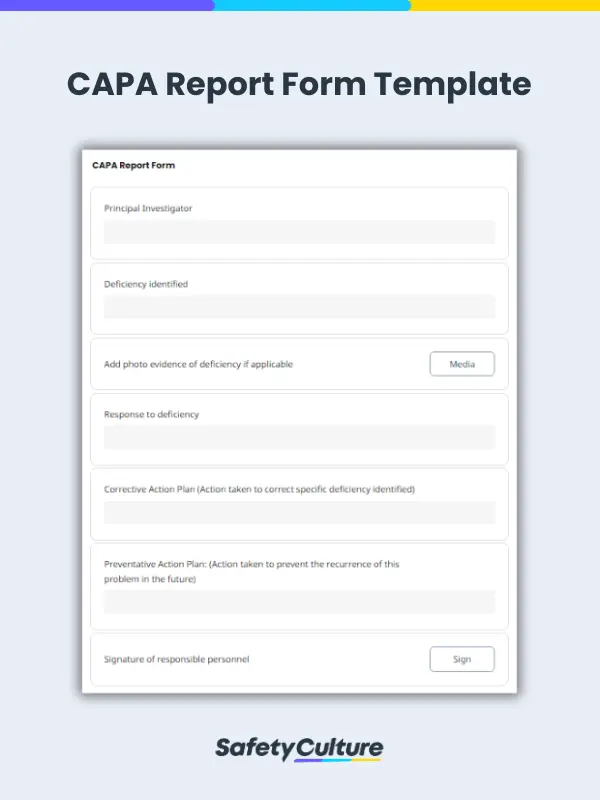What is a CAPA Report?
A CAPA (Corrective and Preventive Action) Report is a tool used in identifying, addressing, and preventing regulatory and organizational non-conformance. Compliance officers record the details of an issue or incident on a CAPA Report form, which primarily includes a summary of the event, date of occurence, items and people involved, corrective actions taken, and preventive action established to avoid future recurrence.
Sample Reports
Here is an example scenario of a CAPA report’s response to an incident:
Sample Incident:
A factory worker is injured due to the improper use of industrial machinery.
Corrective Action – this is the action taken to immediately address the existing problem.
The worker is given first aid and taken to the nearest hospital for further treatment.
Preventive Action – this is the action taken to prevent recurrence of the same problem.
Workers are trained on the proper use of industrial machinery to avoid recurring accidents and injuries.
When to Write a Report
A CAPA report is flexible and can be used for different types of issues and incidents. However, not every event warrants a CAPA report. Quality teams must utilize risk management techniques to determine the severity of an incident and decide if a CAPA report is needed.
Here are some situations wherein a CAPA report is beneficial:
- If the issue is severe/urgent
Issues or events that have long-term negative effects on business, workers, and/or customers can be classified as severe or urgent. Examples include risk of severe injury, risk of significant financial loss, and non-conformance with regulatory and organizational standards. - If the issue is recurring
A recurring issue often cannot be solved by quick fixes. An investigation must be conducted to find its root cause so the CAPA report can provide a permanent solution. An example would be consistent complaints from customers regarding the functionality of a laptop’s keyboard. - If the issue is systemic
In some cases, a recurring issue exists because of an inherent system or design flaw instead of an isolated error. Understanding the root cause before writing a CAPA report is essential to properly address the issue. An example would be if all units of a smartphone model were recalled because its batteries kept exploding.
Benefits
An effective CAPA Report can help an organization operate efficiently and minimize the risk of errors, accidents, and non-compliance with regulatory and organizational standards.
Here are some of the benefits of a good CAPA Report:
1. Encourages continuous improvement
Having an awareness of CAPA reporting helps organizations analyze their processes and systems critically to maximize their effectiveness.
2. Ensures SOP and legal compliance
One of a CAPA report’s primary functions is to ensure an organization complies with regulatory and company standards. It helps organizations implement protocols that are designed to meet compliance and standard requirements.
3. Lowers risk of errors
Errors often happen because of a lack of training, knowledge, or effective process. CAPA reports provide proactive solutions to anticipated errors and lower their risk of recurrence.
4. Provides a framework for problem solving
CAPA reports provide a unified system when approaching incidents and anticipated risks. It ensures that both corrective and preventive actions are taken to completely eliminate the problem.
5. Documents action plans
CAPA reporting helps an organization build a database of corrective and preventive actions against common and anticipated problems. The documentation of action plans,aside from helping prevent similar problems in the future, also help with employee accountability.



